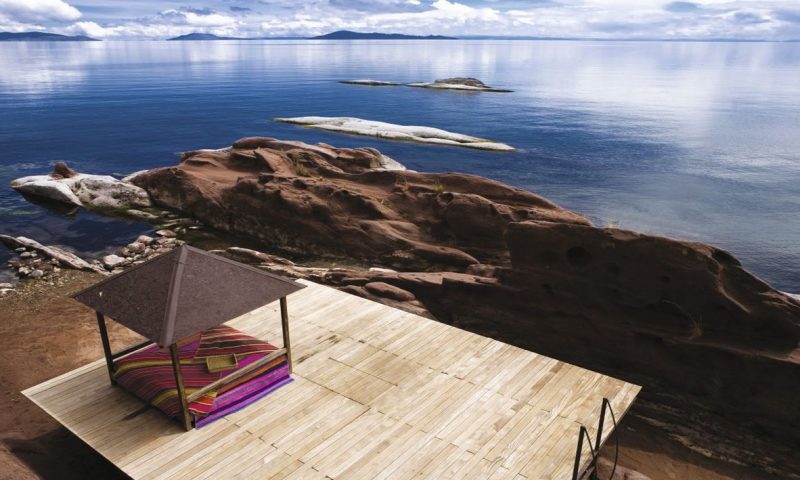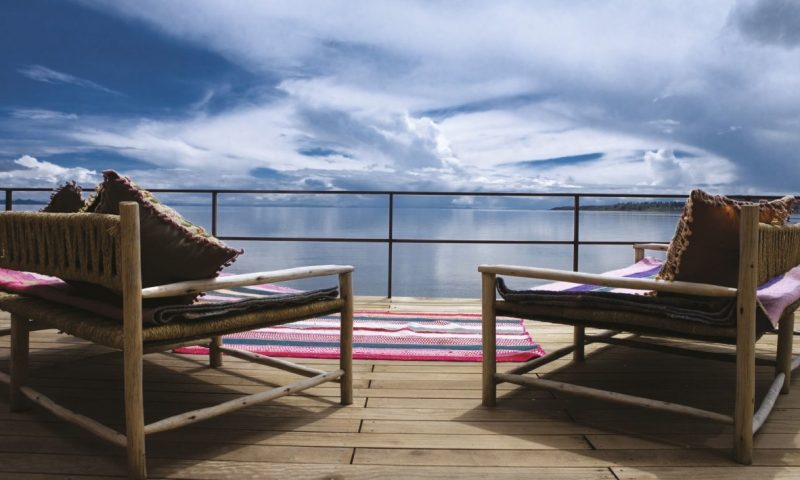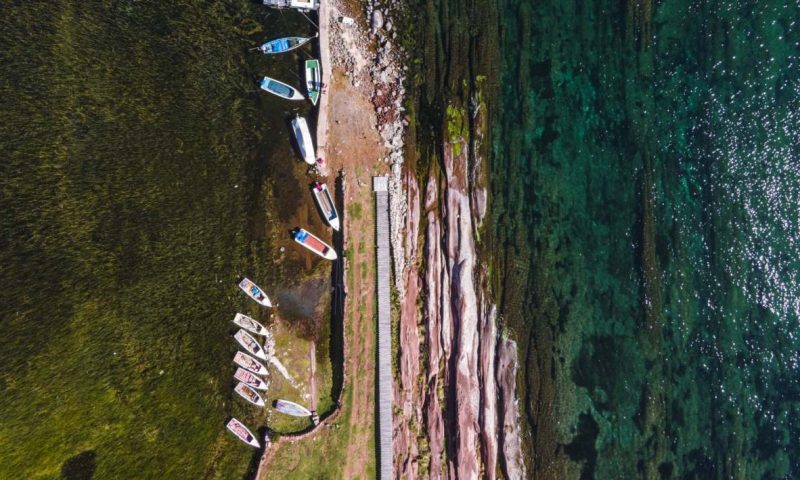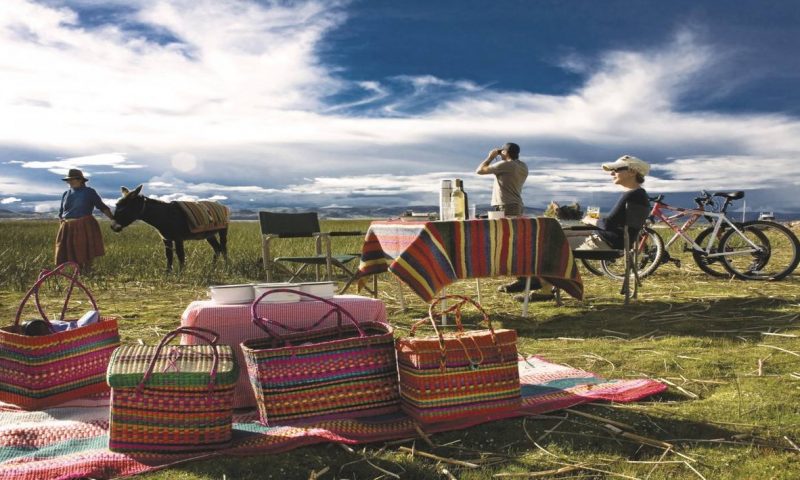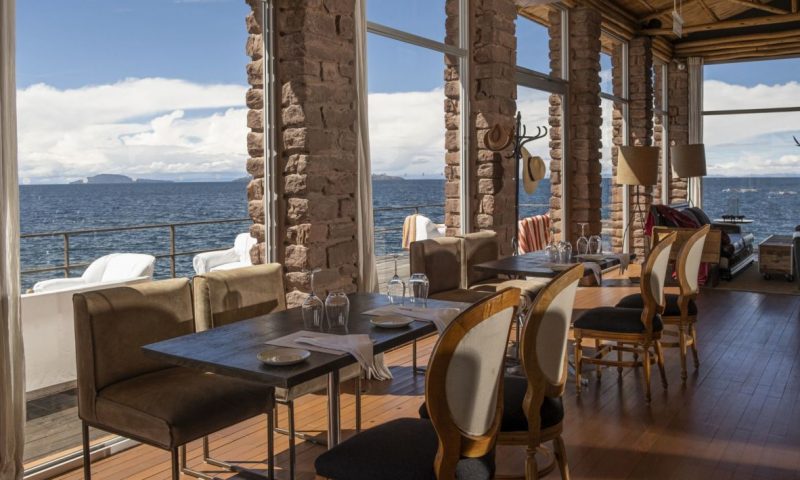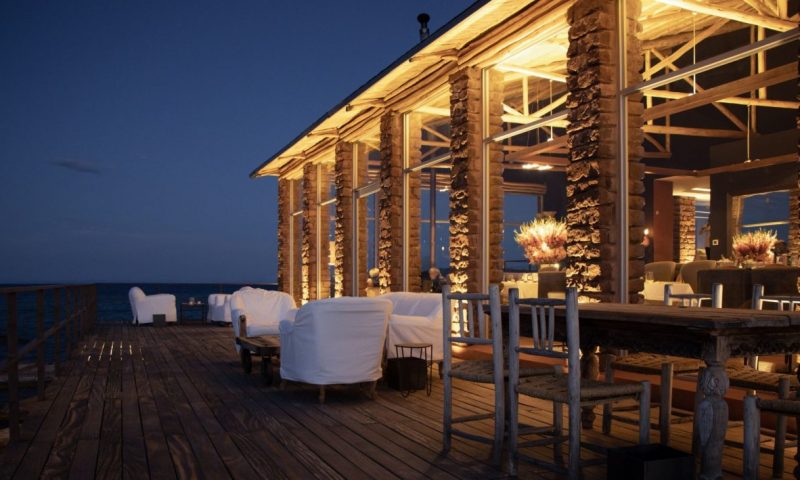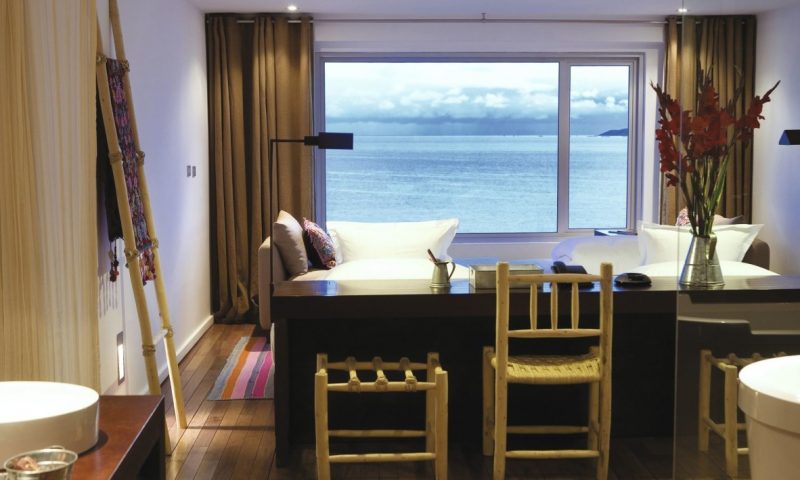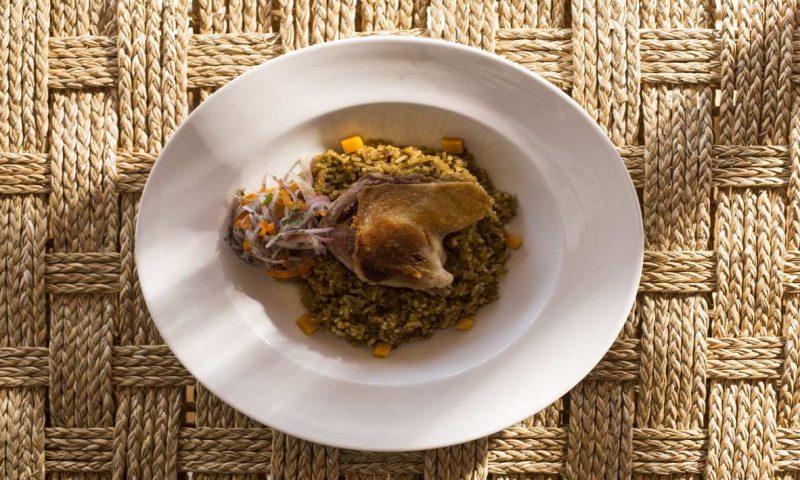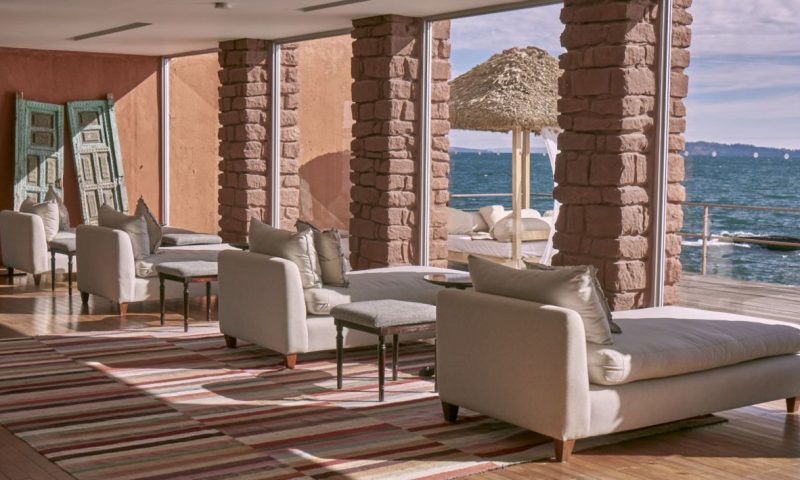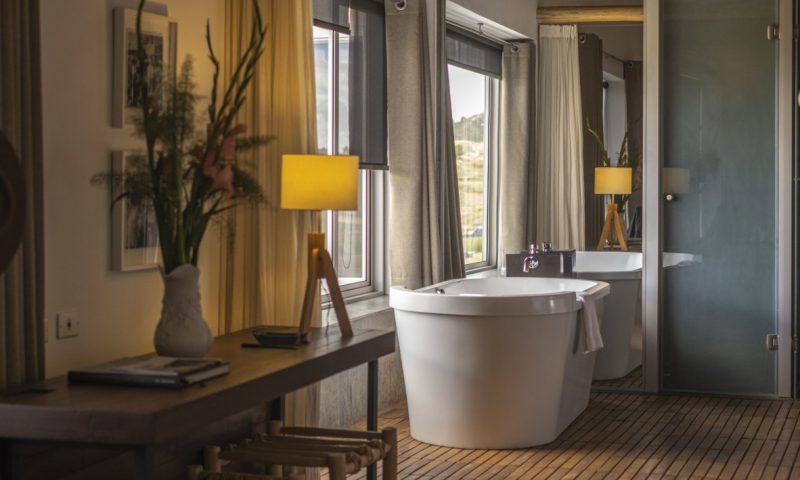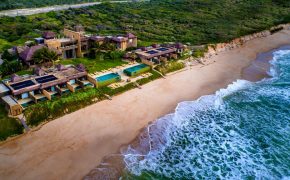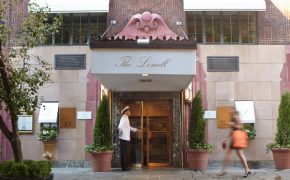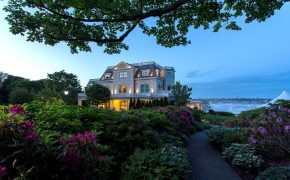Titilaka is located on the south-eastern shore of Lake Titicaca on a tranquil private peninsula shared only with the local Aymara community.
Surrounded on three sides by the pristine lake, and with four acres of grounds, Titilaka is the perfect base to explore this undiscovered corner the earth, renowned for its ethereal beauty.
At Titilaka, all of us understand the need for responsible travel and are deeply committed to both minimizing our ecological footprint and being the best possible neighbour we can to the local communities that have welcomed both us and our guests with open arms.
CALTUR is the Peruvian government certification for tourism quality, which incorporates both environmental and social standards; Titilaka has qualified every year.
Surrender to your senses in a secluded experience lodge on a private peninsula. Go beyond the ethereal landscapes, traditional communities and ancient ways. An enigmatic sense of peaceful solitude at nearly 4000 meters above sea level.
The Lake
Stunning sunrises greet guests each morning, as the waters glow gold in reflection of the sky. Fiery sunsets are an evening tradition, accompanied by campfire nibbles, soul-warming beverages, and local folk legends.
The night sky hangs low with countless stars, a heavy blanket whose incredible milky way you must see to believe.
- The lake and surrounding “altiplano”, or high plateau, provide Titilaka with an expansive, sublime and pristine natural backdrop that never fails to impress.
- The largest lake in South America and the highest navigable body of water in the world.
- It was the foundation of the most influential pre-hispanic cultures of the Andean Region. Titilaka lies at 3810 m.a.s.l. / 12500 f.a.s.l. with an average summer temperature of: 16.5°C – 3°C / 62°F – 37°F and a winter temperature of: 16°C – -2.5°C / 61°F – 27.5°F.
Tales & History
Ancestral legend reveals that the Incas first sprung from the sacred waters of Lake Titicaca. Before them, the Aymara people worshipped and maintained a strong spiritual connection to the lake.
So long before the Incas’ reign, generations of different cultures, spanning centuries and even millennia, left a rich scattering of archaeological sites and ancient monuments -some explored and several untouched- around this celestial body of water, forever worshiped as a divine gap in the earth.
Local cultures
Titicaca forever remains a vibrant nexus of cultures, dialects, and customs. The region mainly consists of two indigenous groups.
Both have their own language, Aymara and Quechua, and culturally are quite distinct. Nevertheless, the mix of such cultures with colonial influences and today’s contemporary Puneño, make for an affluent cultural blend.
Nature (fauna & flora)
Titicaca is widely recognized for its magical natural landscapes. Its wildlife stands out as the true protagonist. Many different bird species inhabit the lake and its surroundings, while the rich soil stimulates the growth of natural elements, such as quinoa and potatoes, and many other andean cereals.
Accommodation
Titilaka features eighteen lake-facing rooms with exceptional view which are distributed on three levels connected by central hallways. Each room has an open format and is equipped with a full bathroom and contemporary furnishings complemented by local textiles and fresh flowers.
Dining
The almost lunar shine, special energy and immensity of the lake are the roots of Chef María Fé Garcia’s inspiration for creating Titilaka’s menu. Featuring numerous Andean ingredients and, of course, many Peruvian products, all with a delicate twist define the Titilaka´s cuisine.
As any visitor to the world´s highest navigable lake knows, that sublime feeling of incorporeal fragility is hard to put in words. However, after a lot of experimenting to know how ingredients respond to altitude, María Fé has managed to put it on a (delicious) plate.
Food
The design and preparation of our food stem from our most compelling performer: lake Titicaca. Our menu is shaped by ancient Andean guidance regarding respect for the land, attention to cultivation, and mindful sourcing of every ingredient.
Using Aymara culinary teachings as well as contemporary designs, our chef has been able to bring together locally sourced ingredients and fine classic cuisine in complete harmony
On the lakeAround the lakeFrom the Boat HouseNear the LodgeEn route excursionsInto Bolivia
Social Commitment
Titilaka’s social commitment is focussed on supporting the sustainable economic development of the villages around the lodge.
Starting by offering local community members a stable, well-paid job that is all too rare in this part of the world, these jobs complement their traditional lifestyle focused on small-scale agriculture.
Three-quarters of our staff come from local communities and we source ingredients locally as much as possible, providing the families with an important market for their products, from food crops to Andean textiles.
Working with the Locals
Titilaka also works hand in hand with a non-profit organization that supports the communities around the lake. We make a donation on behalf of every guest. Guests will also have a chance to give back personally by making their own donation or visiting a local village.
Excursions
The lodge’s Fully Inclusive Service includes all meals, created by Peruvian chef Maria Fe Garcia, and more than a dozen complimentary, highly flexible itineraries led by our bilingual local expert guides.
Our unique experiences give guests the opportunity to learn about the region’s distinctive nature, history and culture. All of these activities can be enjoyed in private or on a shared basis.
Islands of Lake Titicaca
Explore the Uros floating islands and the Island of Taquile on this full-day trip; one of our most popular excursions.
The floating islands of the Uros Titino communities of Lake Titicaca are neither land, sky, nor water, but rather the intersection of the three. Totora, also called junco reed roots, serves as a unique building material.
The Islands of Lake Titicaca excursion brings you closer to the islands’ Uros-Aymara communities providing a unique opportunity to personally meet the skilled reed raftsmen and expert weaver women famous for their craft.
You’ll get to know first-hand the remarkable heritage and the ancestral techniques used to keep their islands afloat.
Aymara route
On the Aymara route, you will get to discover the geography, neighbouring communities, nature and incredible views of the Chucuito peninsula and the Acora District.
Dive into pre-Incan times, listen to the legends and stories your guide will tell you all about, and learn about Lake Titicaca’s importance in the local worldview and means of subsistence.
Colla route
The Colla route formed part of the original network of Incan roadways and runs through the rocky mountain area near the lodge. After an early breakfast, you can choose from numerous roads along the Colla route or up to the Titilaka archway. Underway you’ll be able to enjoy views of Bolivia’s impressive Royal Mountain Range.
Marketplace visit
The people of the Peruvian Altiplano maintain many historical traditions. For example, bartering goods is still a main form of payment and commerce. Sundays are typically the day to exchange agricultural products.
At the marketplace, you’ll see a colourful display and an immense variety of potatoes, quinoa, chuño, among other local goods not seen anywhere else.
Receiving both locals from neighbouring areas as well as foreign visitors, the marketplace offers a unique opportunity to participate in the exciting shopping experience of the local communities Enjoy this lively dynamic and you might find products you have never heard before
Colonial temples
Stop and explore the epicenter of the region’s evangelism during the Spanish conquest in the Juli and Pomata churches. The last one was used as a model for the construction of other South American colonial-period temples.
Located between Cuzco and the historic mining town of Potosí, these religious centres are at the intersection of cultural legacies, the mining rush and the clash of faiths.
Local festivities
Known as the Peruvian Capital of Folklore, Lake Titicaca is host to some of the country’s most renowned traditional festivals.
Among the most celebrated and popular is the Virgin of la Candelaria, declared Intangible and Cultural Patrimony of Humanity by UNESCO and showcasing over 360 pre- and post-colonial dances. This festival is held each February and gathers around 40,000 people.
Storming Puno’s streets with vibrant dances and lively traditional wear made solely for the celebration, the Virgin of la Candelaria is the region’s most representative celebration.
Titilaka has identified 12 local celebrations near the lodge and if your stay with us coincides with one of them, our guides will gladly assist you to go and experience them. Only few travellers have lived these typical Peruvian traditions.
Nautical sports
As the first nautical sports facility on Lake Titicaca, our boat house gives you the exclusive opportunity to sail at more than 12,000 feet (around 3,800 meters) above sea level. Choose among kayaks, Canadian canoes, paddle boards and sunfish sailboats or try them all as you explore this wonderful body of water.
Experienced Titilaka instructors will look over your safety and explain navigation procedures before you begin your nautical journey. Explore the lake at your own pace while enjoying its serenity and silence.
Discover the nearby ecosystems among the shores and Totora reeds to observe local wildlife and plants. Don’t miss the views of the lodge as you make your way back. Once there, enjoy some snacks and refreshing beverages on our outdoor terrace.
Rafting through the reeds
Allow our guides to gently lead the raft through masses of Totora reed near the lodge as you learn more about this local hydrophilic plant species. Explore the lake’s ecosystem and discover the close relationship between the people inhabiting the lake and its natural resources.
Used in a number of ways, Totora reed is part of the local diet as well as a construction material for housing. Because of its nutritious aspects, it also provides a special ecosystem for birds such as the Goldcrest, flightless Grebe, Moorhen and Heron.
Aymara constellation observation
Lake Titicaca’s clear skies and the Altiplano’s serenity make the region a perfect place for astronomical observations. Layer up before stepping outside to our lodge gardens where your guide will explain the movement of stars and indicate constellations such as the Warawara Hawira (Milky Way).
Birdwatching
Accompanied by our specialized guides, you’ll learn to detect, identify and even mimic bird songs as you attempt to connect with Lake Titicaca’s native species. You’ll visit different ecosystems to spot a wide range of local birds, but will focus especially on the protected wetland area near the lodge.
As a member of the RAMSAR Convention on wildlife, this neighbouring protected site is home to 103 species of different migratory and residential birds, several of which are only native to this area.
Strolling across the Altiplano
Consider the magnificent views, hues and impressive Andean geography while you walk along natural paths near Titilaka. Visit a local community and learn more about the traditions and practices of Andean life in the Peruvian Altiplano. Observe local agricultural and fishing practices, an essential part of the daily local routine.
Cycling through Plateria
Cycling through the fields of Platería is undoubtedly one of our most memorable journeys. This short trip offers unforgettable scenery as you explore the outdoors under Lake Titicaca’s blue sky.
Crossing different terrains, you’ll follow rural paths along the shore where you will see locals participating in their daily activities.
Sillustani
The region’s largest and most important pre-Hispanic funeral ground, the archaeological complex of Sillustani is a testament to the area’s rich past and gives you a breathtaking view of Lake Umayo at the same time.
Host to a number of chullpas, or ancient funerary tower-like structures, and built exclusively to house the remains of nobles and distinguished individuals, Sillustani is among the best-kept archaeological sites in the area.
Lampa
On your way to or from the airport, stop and see Lampa, a colonial-period architectural gem and previous Spanish colonial stronghold in the area. Known as the ‘Pink City’ for the lively colours of its town walls, Lampa invites you to visit its church, old mansions and squares.
Renowned in the region for its architecture, the Lampa church was the only local temple built exclusively for the use of Spanish landowners. Explore its mysterious catacombs and impressive replica of Michelangelo’s “La Pietà.”
To Tiahuanaco
The Tiahuanaco crossing is a full-day excursion managed by a third party which will take you across the Bolivian border to the famous Sun Gate. Considered the cradle of all South American civilizations, the Tiahuanaco culture showcases pre-Incan edifices dating as far back as 1580 AD.
After visiting the citadel, continue on to the local museum which hosts ancient objects as well as original tools from the pre-Incan cultures that once inhabited the area. During this excursion you’ll enjoy lunch in neighbouring Bolivia.
To the Island of the Sun
Operated by a company with years of experience providing unforgettable experiences, this excursion provides a visit to the legendary Island of the Sun, origin of the Incan empire, and lunch in nearby Bolivia.
Head south to the border with Bolivia and reach the sanctuary of Copacabana’s cathedral and main square before boarding a catamaran. This vessel will transport you to the Island of the Sun, where you’ll visit the archaeological complex of Intihuatana, a centre for traditional medicine, and the Totora reed raft makers.
You’ll also be able to see Incan farming terraces carved into the mountainside, the centre for traditional clay craft-making and the Intica Hall with a variety of lamas, alpacas, guanacos and/or vicuñas.
To end the day, you’ll board a boat to enjoy panoramic views of the Pilikokaina Incan palace, before heading back to Copacabana and the comforts of your hotel.
